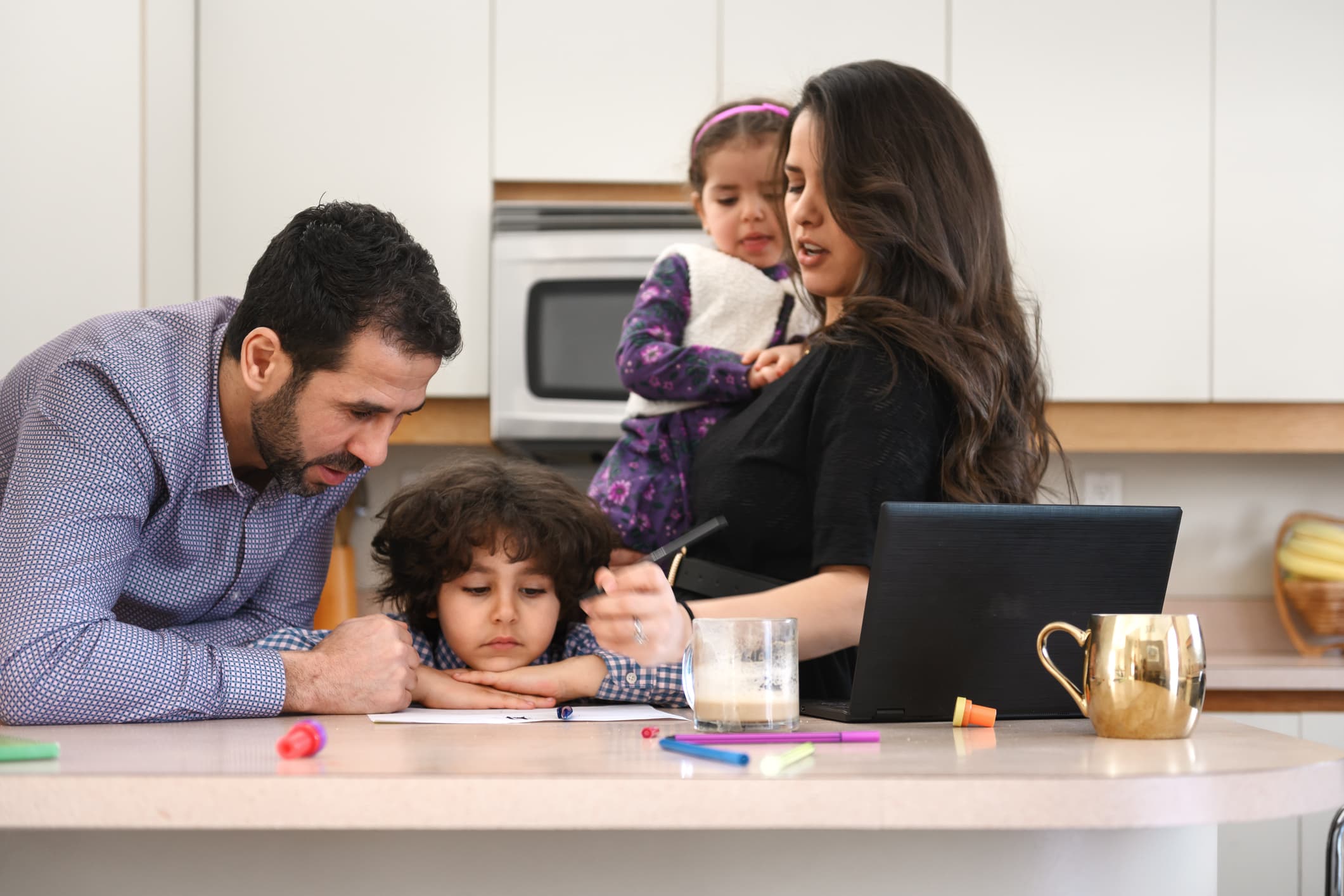Parents anxiously awaiting the July 15 start of the monthly child tax credit payments should start planning how they’ll use the extra money now.
The child tax credit got a boost from the American Rescue Plan, signed into law by President Joe Biden in March. The new enhanced credit increases the annual benefit per child age 17 and younger to $3,000 from $2,000 for 2021. It also gives an additional $600 benefit for children under the age of 6 for the 2021 tax year.
The full expanded benefit is available to all children 17 and under in families with 2020 adjusted gross income of less than $75,000 for single parents and $150,000 for a married couple filing jointly, and ends ends for individuals earning $95,000 and married couples filing jointly making $170,000 (though they’d still be eligible for the regular child tax credit.)
More from Invest In You:
How to get monthly child tax credit without a permanent address
Lack of workers hurts small business ability to keep up with demand
How this 26-year-old TikTok creator makes over $100,000 per month
The monthly payments could be as much as $300 per month for children under the age of 6, and $250 per month for those between the ages of 6 and 17 for those in families eligible for the full credit. For now, the monthly payments are scheduled to continue through the end of the year, and families will claim the rest of the credit when they file their 2021 taxes in 2022.
That’s a significant chunk of money for many families to receive on a monthly basis. Those who are expecting the payments should start thinking now about what they’ll do with the windfall, according to Tania Brown, an Atlanta area certified financial planner and coach at SaverLife, a nonprofit focused on saving.
“Once the money comes in, the emotions take over,” she said. “Have a plan of action.”
Plan now for monthly payments
Thinking ahead about how they will use the extra money each month can help families make the most of the cash, Brown said.
“I would start thinking now what their plans [are] for the money,” said Brown, adding that the last thing she’d want is for families to get to the end of the year — when the monthly payments are set to end — and feel they have little to show for the aid.
Like any tax refund, there are no limits on how families can spend the money they receive from the child tax credit, giving a lot of flexibility for people to decide how the extra cash can best help, depending on their situation.
This will be game-changing for families starting in the summer but is temporary.Natalie Fosterco-chair of the Economic Security Project
That’s important, especially for low-income families and those who’ve been hit hardest by the pandemic, according to Natalie Foster, co-chair of the Economic Security Project, a progressive anti-poverty nonprofit.
“Families know what they need, and family needs change from week to week,” said Foster, adding that common needs can include paying for car fixes, child care, rent, food and more. “This is the type of support that comes with no strings attached.”
How will families get the credit
In addition to planning for how to use the extra money each month, families should make sure they know how they’re receiving the credit. For about 80% of families, the money will be direct deposited into the same account they told the IRS to use for their 2020 tax refund, the agency said.
Others who didn’t select direct deposit when they filed 2020 taxes will receive either a paper check or a debit card, according to the IRS.
Families who still haven’t filed 2020 tax returns but would be eligible for the credit should make sure they submit their tax information to the IRS, even though it’s after the official deadline. Doing so ensures that the IRS has the most up to date information about your family and where to send any benefit owed.
Timing of payments may change
One important thing for families to remember is that the enhanced child tax credit and monthly payments will last only for one year, with monthly payments that start in July and go to December.
“This will be game-changing for families starting in the summer, but is temporary,” Foster said.
After that, the remaining credit will be claimed when filing a 2021 tax return and come in a lump sum with the rest of what the family is owed from the IRS. That will likely change how they should budget the funds — families may need to find their own ways to effectively save so that the credit can be helpful over time.
Of course, it’s also possible that new legislation further expands the credit. The American Families Plan proposed by the Biden Administration would extend the enhanced benefit through 2025, and a group of other Democrats are pushing to make the credit and monthly payments a permanent benefit.
To see how much you could expect to receive, personal finance website Grow created a calculator that factors in your filing status, annual income and the number of dependents you have.
If you’re a parent who received stimulus payments for your children and would be willing to share how you spent the money, email carmen.reinicke@nbcuni.com
SIGN UP: Money 101 is an 8-week learning course to financial freedom, delivered weekly to your inbox.
CHECK OUT: How to make money with creative side hustles, from people who earn thousands on sites like Etsy and Twitch via Grow with Acorns+CNBC.
Disclosure: NBCUniversal and Comcast Ventures are investors in Acorns.
